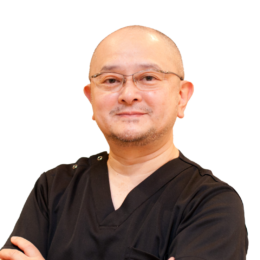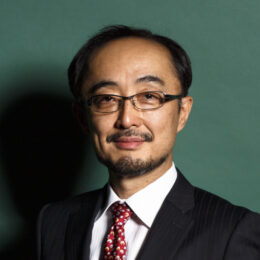
The ultimate mission of aesthetic medicine is to design treatments that simultaneously achieve three goals: (1) safety, (2) reliable results, and (3) patient satisfaction. In this lecture, we examined how to combine the three mainstays of shape alteration, support/volume restoration, and tissue quality improvement, using actual cases. Below, we summarize the key points and propose practical procedures for clinical application.
- INDEX
Perspective for Total Facial Treatment (02:20-)
Understanding the Four Layers of the Face
The skin, superficial fat layer, fascia and deep fat layer, and periosteum—these four layers are interconnected by ligaments and fibrous structures, and changes in any one layer can affect the other layers. At the initial examination, we evaluate the thickness, mobility, and tension by palpation to identify any problematic layer.
Understanding The Big Picture Using The Iceberg Model (06:20-)
The nasolabial folds that patients concern about are just the tip of the iceberg, and the underlying causes often include bone atrophy and ligament laxity. When developing a treatment plan, it is essential to take a comprehensive view of the entire face rather than focusing on individual areas.
Surface-Visible Wrinkles/Fine Lines and Deep Within Structural Changes
The nasolabial folds are creases that appear on the skin’s surface as a result of multiple factors. The causes are as follows:
- Bone resorption and absorption: As the bone mass of the maxilla and nasal floor decreases, the foundation supporting the skin and soft tissues is lost, causing the superficial layers to sink.
- Laxity of supporting ligaments: When ligaments such as the zygomatic and/or masseteric ligaments loosen, the malar fat pads sag, deepening the groove.
- Reduction in fat pad volume: The combination of atrophy of deep-medial cheek fat and increased mobility of superficial fat accentuates the crease.
- Loss of skin elasticity: Degeneration of dermal collagen due to UV light and glycation fixes wrinkles.
Understanding Deep Patient Needs with the Iceberg Model
Patients often say they want to get rid of their nasolabial folds. However, behind this desire lies a fundamental goal: to look better in photos, to avoid looking older, and to resolve the root cause of the problem. This is like a huge iceberg beneath the surface. Core of Iceberg Model is not the surface creases, but the underlying anatomical and functional causes. And psychological factors, which are patients’ “Desired Images”.
Once both of these have been clarified, the next step is to optimally allocate the three mainstays.
Combination Treatment Based on Three Mainstays (9:15–)
- Shape alteration:
Face lift or thread lift with cogs physically lifts sunken areas and remodels the bone structure. While surgical intervention is the most effective option for shaping the face quickly, we carefully explain the invasiveness and downtime to patients and determine the appropriate treatment based on their social circumstances. - Support and volume restoration:
Fillers such as hyaluronic acid and PCL are positioned as “reinforcing materials” rather than “filling agents” to avoid over-filled syndrome. Targeting areas directly below ligaments or on the periosteum provides structural support akin to reinforced concrete. - Tissue Quality Improvement:
EBD (HIFU, RF, laser) facilitates collagen remodeling and skin elasticity restoration. A two-step approach is recommended: deep heating to tighten the foundation, followed by superficial irradiation to uniform skin texture.
Treatment Order and Clinical Considerations (14:39–)
The basic approach is to perform EBD, lift, and filler once a year in that order. If short-term results are prioritized, filler can be performed first, followed by EBD after evaluating the results. Same-day treatments should be avoided or kept to a minimum, as there is a risk of additive inflammation.
Summary: Practice of Holistic Aesthetics Medicine (17:30-)
Aesthetics medicine is “holistic medicine,” and its true value can only be realized through a combination of anatomical knowledge and psychological and social considerations. By evaluating the entire face in a multi-layered manner and optimizing the three mainstays for each patient, we can provide treatments that are safe, effective, and satisfying. Let’s fulfill our patients’ desire to age beautifully by seamlessly integrating devices, fillers, and surgical techniques.


